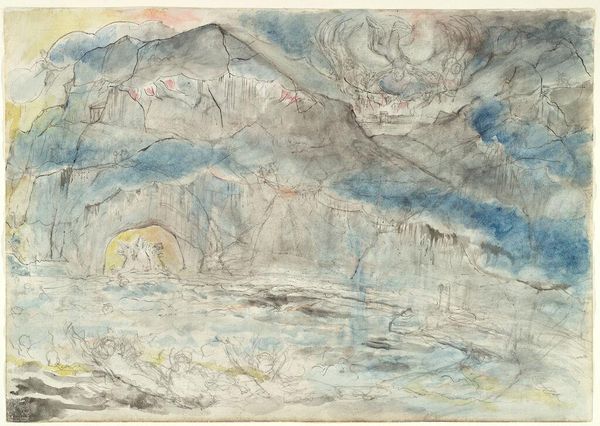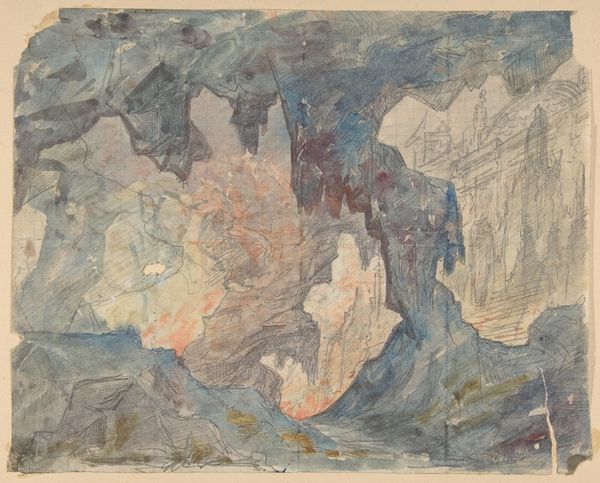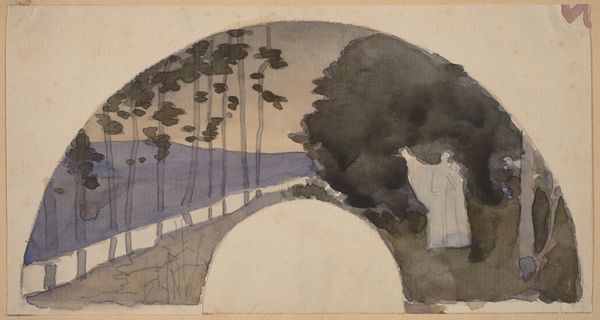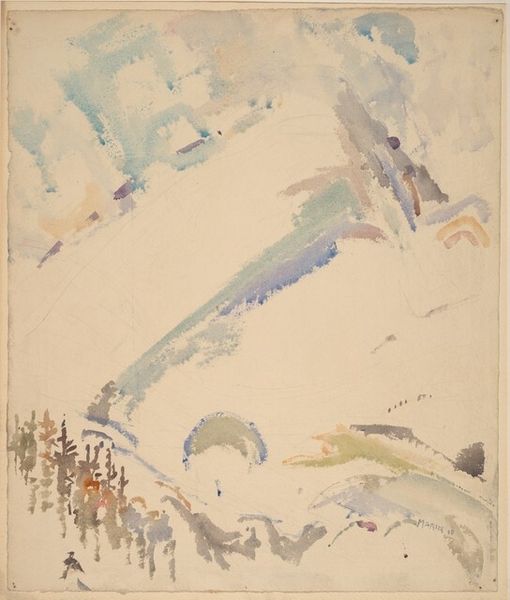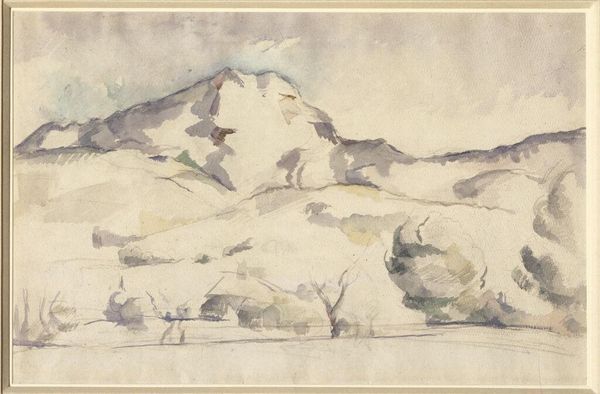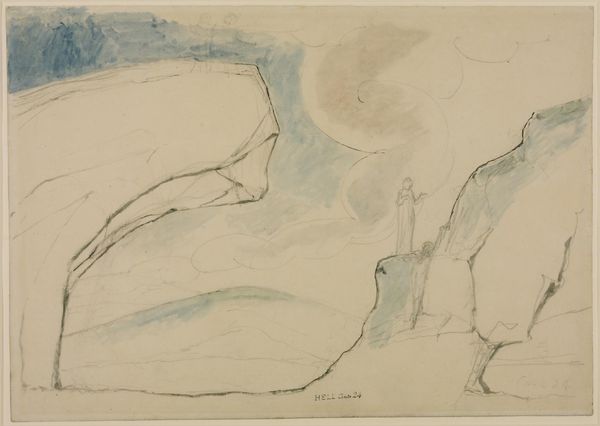
Dimensions: support: 371 x 528 mm
Copyright: NaN
Editor: This is William Blake’s “Homer and the Ancient Poets.” I'm struck by how dreamlike it is. What do you see in this piece? Curator: The figures seem to float between realms, don't they? Blake uses archetypal imagery: the cave as the subconscious, figures on the mountaintop representing enlightenment. What do these symbols evoke for you? Editor: It feels like a journey from darkness to light, perhaps. Curator: Precisely. Blake saw Homer as a gateway to understanding universal truths. The symbols are a map of consciousness, guiding us toward self-discovery. Editor: I see it now; it's a powerful interpretation. Curator: Blake's genius lies in making the unseen visible, using symbols to unlock our own potential.
Comments
tate 8 months ago
⋮
http://www.tate.org.uk/art/artworks/blake-homer-and-the-ancient-poets-n03353
Join the conversation
Join millions of artists and users on Artera today and experience the ultimate creative platform.
tate 8 months ago
⋮
This image depicts the first circle of Hell in Dante’s ‘Inferno’ (the first part in his poem, The Divine Comedy) – Dante and Virgil look down from a cliff into ‘Limbo’, where they see a group of ancient Greek and Roman poets, including Homer. According to Dante’s Roman Catholic theology, Limbo was a place for virtuous non-Christians (like the poets) who did not deserve eternal damnation. Homer is shown holding a sword, perhaps in reference to his poetry celebrating the Trojan war. Blake was opposed to war and described the Greek and Roman poets as 'slaves of the sword.’ Gallery label, October 2023
